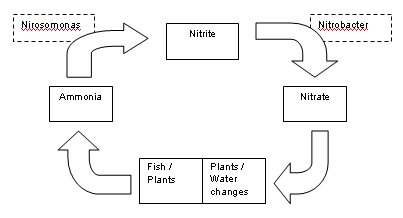 |
||||||||
 |
||||||||
Koi For Beginners - The Basics
Koi will thrive under the right conditions but to achieve these conditions takes a bit of work and knowledge, without this problems will occur and ultimately the Koi will suffer. Whilst goldfish and British Koi are hardy species and can live quite happily in small, slightly under filtered ponds, Japanese Koi take more effort to create a habitable environment. This doesn’t have to be complex or time consuming if you master the basics. These are:
Size of the Pond
Koi can grow to a large size and whilst they can live quite happily in small ponds for a few years, they may eventually outgrow it. Also, in order to allow the Koi to develop good body shape by swimming against the resistance of the water and to assist in reducing drastic temperature fluctuations in winter it is advisable to have a minimum depth of 4’.
Plants
Koi will tend to forage around in any plants within the pond and large Koi can damage the plants and in turn dirty the water. Most Koi ponds tend not to contain plants or if they do they are protected behind a barrier so the Koi can not get to them.
Filtration
This is the most important aspect of all. It is often said that keeping Koi is about keeping water – meaning that ensuring the water quality is suitable is the main priority when keeping Koi. In order to understand how filtration works it is first necessary to understand the nitrogen cycle:
- Ammonia is produced by the fish in the waste they produce and also through respiration and the breakdown of any uneaten food or plant waste. This ammonia is toxic and requires removal. The constant presence of ammonia will have a detrimental affect on the Koi and prolonged periods of high levels can kill the fish.
- This ammonia is broken down into Nitrite by bacteria called Nirosomonas. Nitrite is also toxic to fish.
- Nitrobacter is another strain of bacteria which breaks down the Nitrite into less harmful Nitrate – if plants are used within the pond or in a vegetable filter they use Nitrate as a form of nutrient. Nitrate can also be removed through weekly water changes (5% water change is recommended)

In order to ‘grow’ the beneficial bacteria mentioned above (nirosomonas and nitrobacter) filtration is required. The filtration system consists of two elements (+ UV):
- Mechanical - This stage removes all the debris and ‘solid’ particles from the water. Common methods include a vortex or settlement chamber or sieve. By removing all the solid particles from the water it not only ensures that the water remains clear so the fish can be seen but it also prevents the dirt from collecting on the biological media and preventing the bacteria from colonising.
- Biological - This stage follows the mechanical stage and is the area on which the bacteria form. This stage of the filter, if the mechanical stage is working properly, should not be ‘dirty’. It is important that this stage is not disturbed and whilst the mechanical stage should be cleaned on a weekly basis (some filters require more or less maintenance than this) the biological media should mainly be left undisturbed so as not to destroy the bacteria.
In addition to these stages it is also common to use an Ultraviolet Clarifier (UV or UVC) this ‘light’ destroys algae in the water passing through it and helps to prevent green water.
It is always better to have too much filtration rather than too little, water volume, stocking rates and feeding rates play a large part in the size of filter you need as these all contribute to the amount of ammonia being passed into the water and thus the amount of bacteria needed to remove it. Products are available which help to ‘grow’ bacteria such as Kusuri Klear, Oase Filtokick and Yamitsu Filterstart but these will not make up for inadequate filtration.
Food
There are numerous brands of Koi food on the market which offer different properties. Koi will require feeding frequently throughout the day during the summer and whilst the temperature is high can be offered protein feed. When the temperature drops wheat germ should be the sole food as it is easily digested at a time when the Koi’s digestive system is at its slowest. During really cold whether when the Koi are inactive they should not be fed.
|